Columbia River Oil Exports by Rail
U.S. oil production grew at its fastest rate in history in 2012, and 2013 will be even stronger, say industry watchers. The Department of Energy has reported that domestic oil production is at the highest level in over 20 years. This surge, thanks largely to shale gas in the mid West, requires significant infrastructure to move the crude oil, and the potential to create new export jobs.

China is the world's second-largest consumer of oil behind the United States, and the second-largest net importer of oil as of 2009.

The Bakken Formation underlies large areas of northwestern North Dakota and northeastern Montana, as well as southern Saskatchewan and southwestern Manitoba. The green area on this map shows the approximate extent of the Bakken oil play.
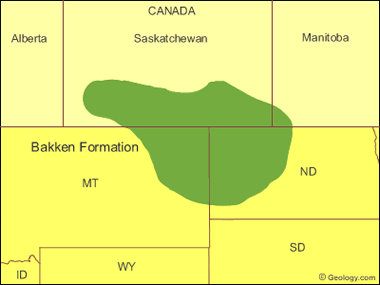
Advances in drilling and recovery technology such as horizontal drilling and hydrofracturing have transformed the Bakken into a prolific oil and natural gas producer. The Bakken oil fields could become the world’s largest discovery in the last 30-40 years, with tens of billion bls. Production is outstripping pipelines so trains are becoming the primary method of moving oil.
Crude oil shipped by railroad from North Dakota is drawing fresh scrutiny from regulators concerned that the cargo is adding environmental and safety hazards, something that analysts say could raise costs.

After tank cars blew up July 6 on a train in Quebec, investigators in Canada are considering whether the composition of the crude, which normally doesn't explode, may have played a role in the accident that killed 47 people. The oil was from North Dakota's Bakken shale formation.
The Federal Railroad Administration is investigating whether chemicals used in hydraulic fracturing are corroding rail tank cars and increasing risks.
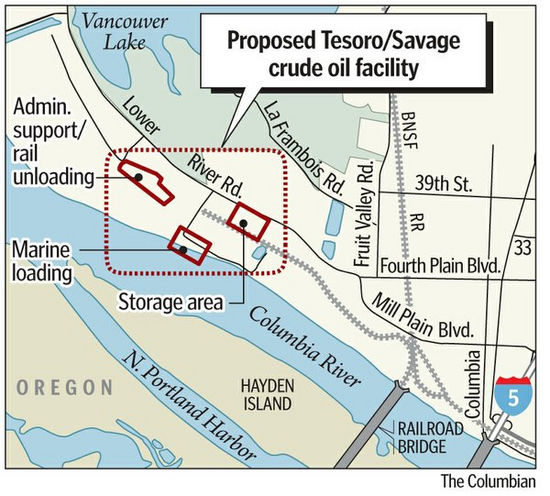
Tesoro Corp and Savage Services want to spend up to $100 million to build a 42-acre oil-handling operation at Port of Vancouver sites, including the Terminal 5 rail loop and Terminal 4 marine-loading facilities.
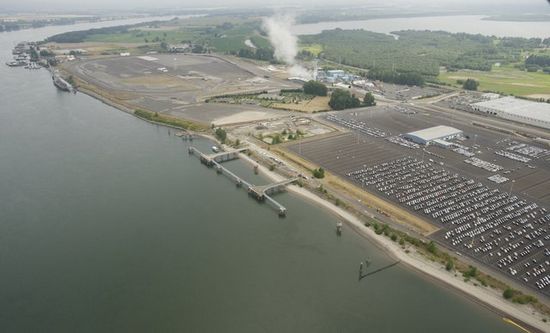
Savage and Tesoro Corp. want to handle as much as 380,000 barrels of crude oil per day, hauled by train from the Bakken shale formation in North Dakota. Vancouver Port commissioners on July 23 approved leasing 42 acres to the companies, despite public testimony overwhelmingly against the oil-handling plan.
The Tesoro-Savage project would create an estimated 250 temporary construction jobs and, initially, 80 full-time jobs, according to Kelly Flint, general counsel for Savage. At peak operation, the companies would employ "110-ish" full-time workers, nearly all of them from the local market.
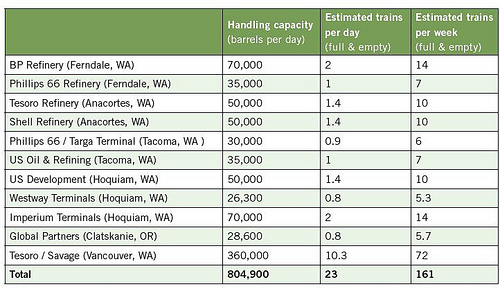
If the current rates of growth continue then crude production in the Bakken will reach 1 Million barrels/day by the end of 2013, up from 200 Mb/d in 2012.
BNSF says a single dedicated train can carry approximately 69,000-81,000 barrels of crude. A unit train must have a minimum of 100 crude railcars for unit pricing.

By the end of 2012 unit trains carrying light sweet Bakken crude had begun to flow to Washington State refineries.
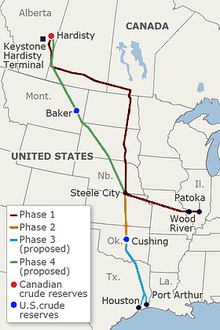
The oil export terminal in Vancouver is expected to recieve up to 360,000 barrels a day, nearly half the capacity of the controversial Keystone XL pipeline through the Midwest.
Tesoro says the crude from the Vancouver terminal would be transferred to barges or ships and sent to 19 refineries in California, Washington, Alaska and British Columbia.
Public records obtained by The Vancouver Columbian show that the companies spelled out their approach to the project, designed to handle as much as 380,000 barrels of crude per day, in a Jan. 23 "statement of interest" document (PDF).
The companies wrote in the 42-page letter to Mike Schiller, the port's general manager of operations.
"Implementation of this plan will occur prior to any public notice or the filing of permit applications in order to encourage early collaborative stakeholder communication, garner support for the Project, and reduce the risk of potential opposition," it read.
[vimeo http://www.vimeo.com/69970988 w=400&h=300]
Tesoro and Savage weren't the only companies to come to Vancouver looking to take advantage of the U.S. oil boom, reports The Columbian. The port had already been getting numerous inquiries "around the movement of crude oil and liquid petroleum," said Theresa Wagner, the port's communications manager. So it decided to ask for formal proposals.
The state Energy Facility Site Evaluation Council would scrutinize the proposed crude oil facility and make a recommendation to Gov. Inslee, who has the final say.
Columbia Riverkeepers, told commissioners during a July 9 public hearing that they should demand a full public safety analysis now, before signing a lease, instead of kicking the issue to the state Energy Facility Site Evaluation Council.
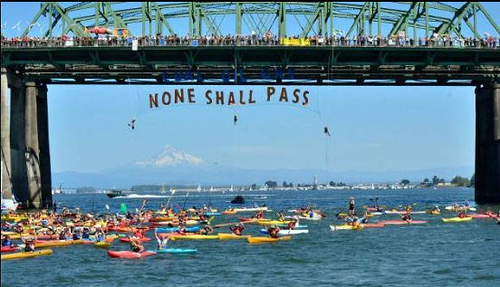
Author and environmental activist Bill McKibben, founder of 350.org is also opposed to the terminal and toured the site of Tesaro/Savage’s proposed 380,000 barrel-per-day (bpd) crude-by-rail facility at the Port of Vancouver, Wash.
Portland Rising Tide! is part of an international, all-volunteer, grassroots network of groups and individuals who organize locally, promote community-based solutions to the climate crisis.
The Columbia Pacific Bio-Refinery was the largest ethanol plant on the West Coast of the U.S. with nameplate capacity of 108 million gallons a year. The facility has approximately 8MM gallons of on-site final product storage tanks and potential access to another 18MM gallons of tank storage adjacent to the site. Here's a virtual tour of the facility.
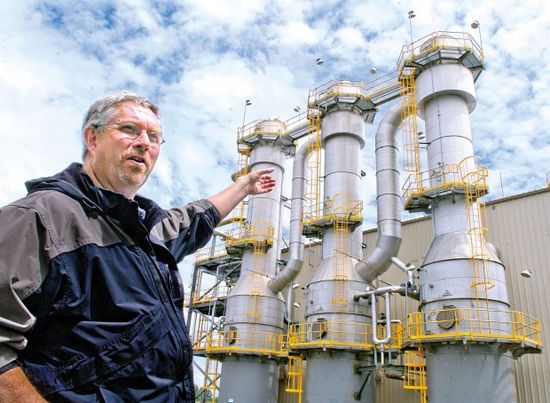
JH Kelly, a Longview contractor, built the $200 million plant and purchased it out of bankruptcy, investing another $20 million to correct issues that arose during the six months it operated in 2008 and 2009 under the name Cascade Grain, reported Longview's Daily News. Now it's an oil exporting facility, called Global Partners, bringing in Shale oil by rail and exporting it by barge.
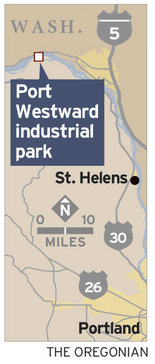
Located at Port Westward on the Columbia River near Clatskanie, Oregon, the restarted Ethanol Plant is located on a short-line railroad, the Portland & Western. The rail line runs through Rainier, Oregon on its way to Astoria and is used primarily to supply logs to the Teevin Bros. yard in Rainier.
Oil trains from the Bakken formation, in North Dakota, travel through the Columbia River Gorge, Portland, St. Helens, and Rainier, among many other cities on the way, to the export terminal.
With little public involvement, Global Partners has now started exporting oil from Port Westward near Clatskanie, Oregon. Global Partners owns two crude oil loading facilities in the Bakken, and Oregon's Port Westward Railcar unloading facility the Ethanol distillery, the docks, and its two 3.8 million gallon ethanol storage tanks to store and ship crude oil.
Global Partners is now seeking a permit to rebuild a larger dock to export more oil.
The Kinder Morgan coal export terminal proposal would also use Port Westward, about 15 miles downriver from Longview, WA. That proposal was scrapped in May, 2013. It was at least honest about using trains.
The Kinder Morgan coal export facility would have triggered 12 round-trip coal trains a day -- arriving full, returning empty. Each would be 1 to 1 1/2-miles long, running 10 mph.
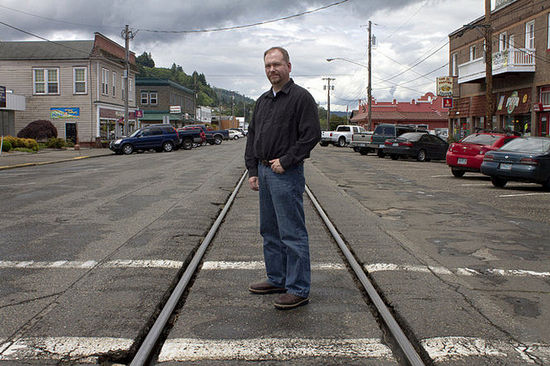
But Ambre Energy's barge-loading coal proposal at the same Port Westward location, is still on. Ambre barge proposal would export about 8 million tons of coal. No trains. But barge traffic is limited by the BNSF interstate railroad bridge, just West of the I-5 vehicular bridge. If Amber they wanted to expand their proposed Oregon terminal, they may have to use trains. Ambre has not even hinted about bringing coal in by trains to Port Westward. Yet.
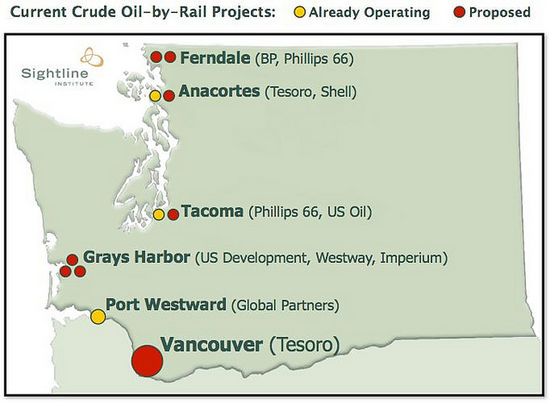
Sightline Institute’s The Northwest’s Pipeline on Rails (blog) has a comprehensive, region-wide review of all the oil-by-rail projects planned or currently operating in the Northwest.
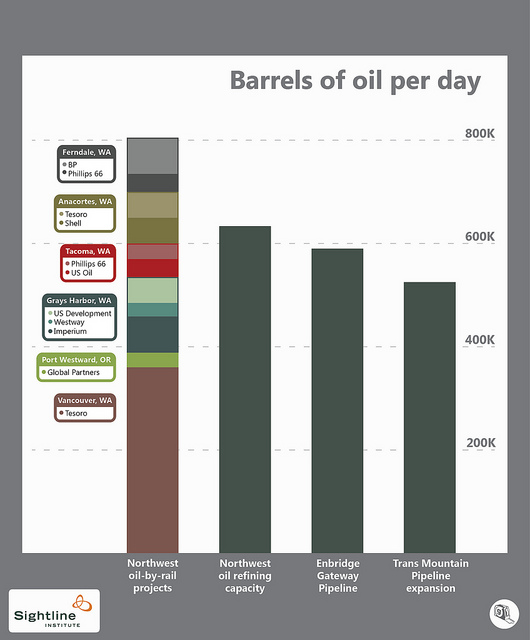
NEXT: Bio Mass in Oregon
Back to: Green industry <<